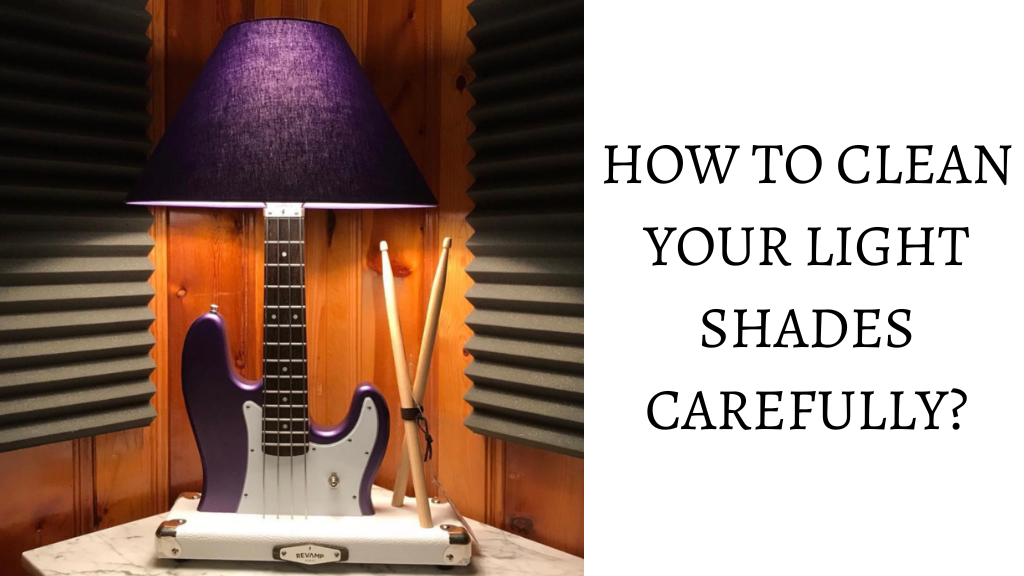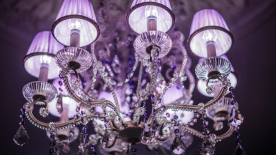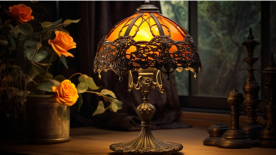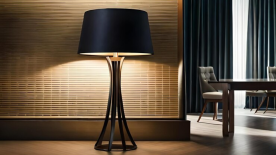In addition to softening the light from a naked bulb, lampshades may be a stylish accent to any environment. If you want to change the mood of the light in a space and the way a lamp looks, just change the shade.
White or neutral-colored lampshades, in particular, are prone to yellowing and might use a good cleaning. Light shades can be quite expensive. Therefore, it's only natural that you wish to prolong their beauty. A few simple items are all that's needed to clean fabric, paper, plastic, and glass lamp shades.
Lampshade Cleaning Frequency and Items
Once a week, dust the lampshade. Doing so will prevent dust and spiderwebs from being permanently lodged in the lampshade material. Lamps shades can eventually require a more thorough cleaning due to the buildup of dust, grease, nicotine, and other air pollutants.
Essential Items to Clean Your Light Shades
- Debris remover
- Hand sanitizers
- Removable gum
- Throwaway dustpan
- Soap for cleaning dishes
- Paintbrush with new bristles
- Upholstery brush vacuum cleaner
- Skirt hanger with decorative clips
- Protective gloves made of cotton
Method for Cleaning Fabric Light Shades
Step 1: Get Rid of Dust
Every week, you can dust a fabric light shadein various ways. Be careful to dust the interior and exterior of the shade while it is still attached to the lamp. Before you start, turn off the light bulb to avoid any accident.
Several tools are available, such as a microfiber cloth or a clean disposable duster. If you must vacuum around ornamental trim, do it gently and not with excessive suction. A clean, soft-bristled paintbrush is ideal for entering crevices and dusting pleated blinds.
Step 2: Cleaning with Solution
You can wash cloth lampshades to remove grime and other stubborn dirt. Observe the instructions provided by the manufacturer if a care tag accompanies the shade. In that case, you might want to brush the shade by hand. Detach any embellishments attached by glue or stitching, such as beaded trim, as they might not withstand washing.
Get a big enough basin or bathtub filled with lukewarm water to submerge the lampshade halfway up its height. Add a teaspoon or a mild detergent or soap for more delicate clothing. To distribute the detergent, swish your hands in the water.
Step 3: Wash the Shade
Turn off the power and take the shade from the lamp's base. Lamps with a light source in the base require this feature. Carefully dip the light shades into the soapy solution while holding it by its top wire supports. Give the shade around ten minutes to absorb.
Change the direction of the shade so all surfaces soak for the same duration if necessary. Scrub the interior and outside of the shade gently with a microfiber cloth dipped in the soapy water. Adding a detergent to the cloth will help remove food or bug stains.
Step 4: Rinse the Lampshade
Remove the shade and pour away the washing liquid. Fill the bathtub up with clean, lukewarm water again. Place the shade back in the tub to remove any remaining soap and gently swirl it around in the water. If excessive scum remains after draining, try using new water again.
Step 5: Wipe Off the Shade
To get the most water out of the light shade, shake it gently after rinsing it. Place the shade on a thick cloth and set it upright to dry. Another option is to suspend the shade from a shower rod using an adjustable-clip skirt hanger so it may drip dry. Before reattaching the lampshade to the base, ensure it is completely dry.
Method for Cleaning Plastic and Glass Light Shades
Step 1: Take the Shade Off
Take the lampshade off and turn off the power. Before you start cleaning, make sure the shade is cool. A sudden shift in temperature during washing could lead to fractures. Clean lamps with fixed shades by wiping them down with a moist microfiber towel to remove fingerprints and dust. Let it air dry, or use a clean microfiber towel to finish drying.
Step 2: Wash Gently by Hand
Pour some lukewarm water into a big sink and stir in a few drops of dish soap. Wash the lampshade by hand, using a sponge or microfiber cloth, on both the interior and outside. Do not scrub or use harsh cleaners to preserve the printed design on the shade and prevent scratches.
DO NOT put a lampshade in the dishwasher under any circumstances. The dishwasher's high heat and the detergent's harshness could damage the lampshade. To dry the shade, use a dry microfiber towel. Once it's dry, put it back on the light base.
Tips for Keeping Paper Light Shades Clean
Light shadesmade of paper or parchment are susceptible to contamination from the natural oils in our hands and any products we may have used to clean them. Before handling paper shades, protect your hands from potential spills by donning cotton or rubber gloves.
Regularly removing the paper lampshade from its base and gently wiping it down from top to bottom with a clean, dry microfiber cloth is an additional maintenance step beyond dusting. Transfer the dust to a new, clean cloth part and keep going.
If your paper shade is turning yellow, avoid using any cleaning products that contain water. Use an art gum eraser to smooth out any stains or insect flecks. To avoid denting the lampshade, handling it gently and using your other hand to support it is important.
To sum up, keeping your light shades clean improves the aesthetics of your room and guarantees the best possible illumination. Preserving the brilliance of your fixtures requires gentle and frequent cleaning with a soft cloth, mild detergent, or a vacuum attachment.







